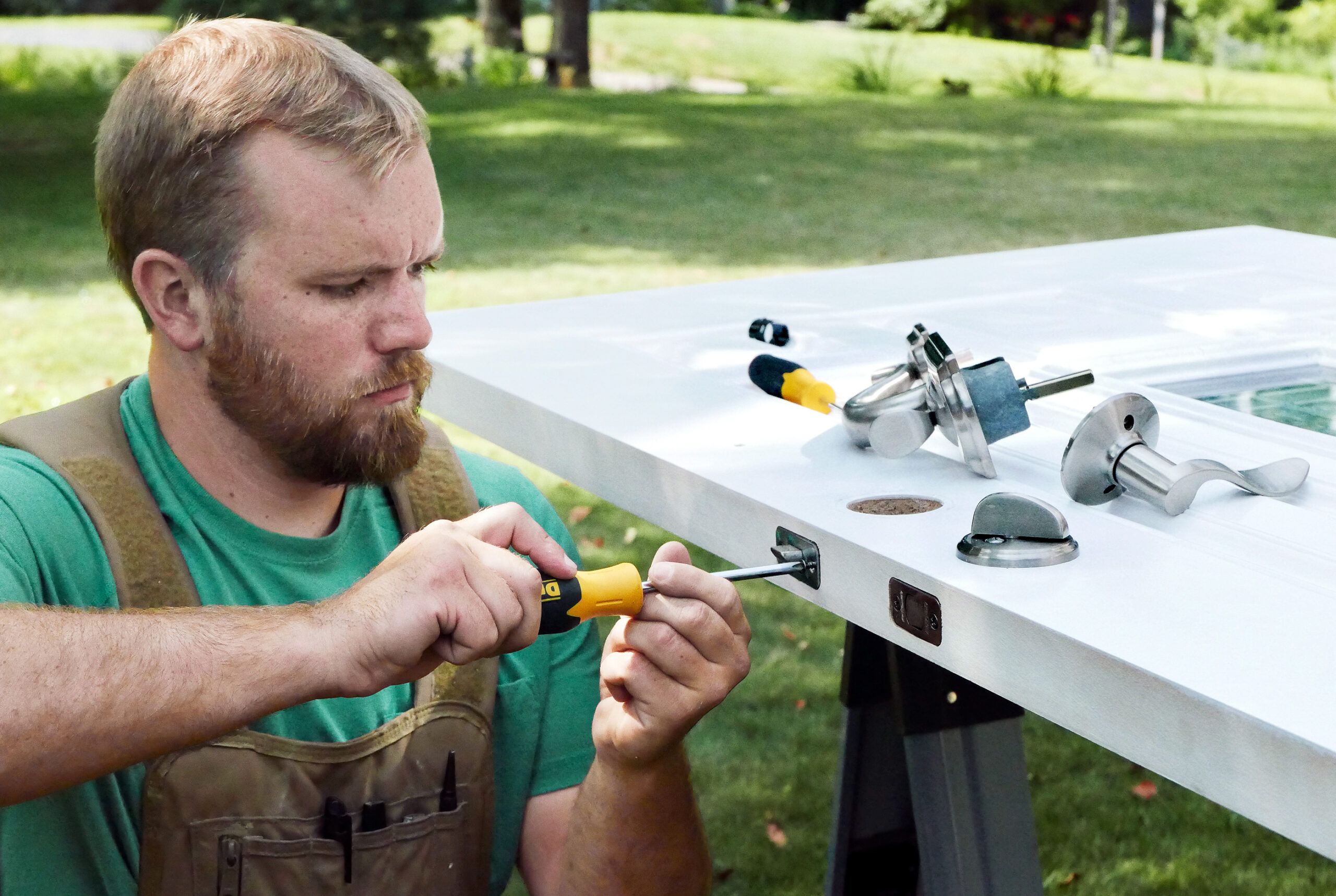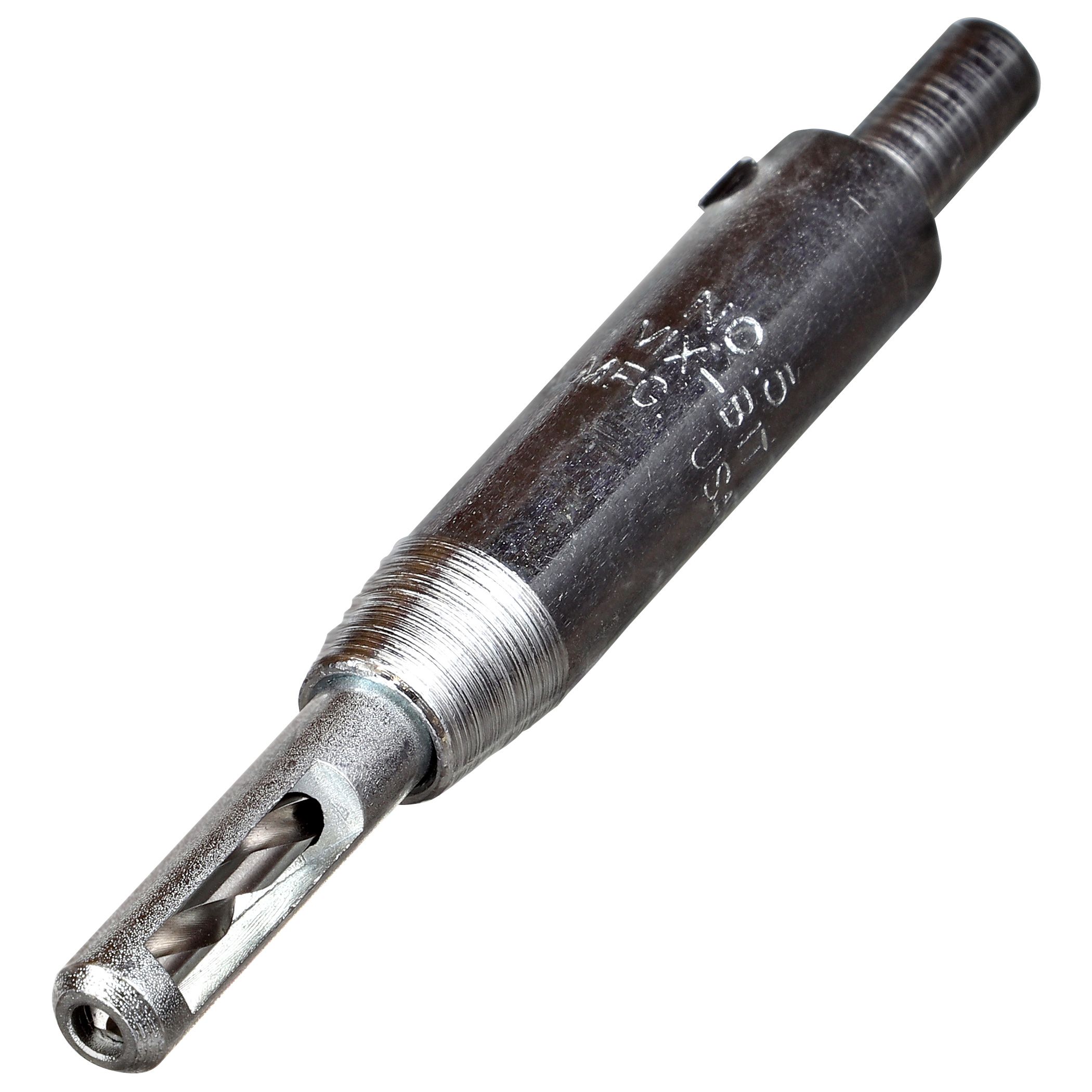Project details
Skill
Cost
Estimated Time
However, if the door isn’t symmetrical from side to side, or if you’d rather have the door’s inside face stay on the inside, this job becomes more difficult; ask a trim carpenter to tackle it. But if your door is symmetrical from side to side and inside and out, this is a doable DIY project. Here’s how to go about it.
What You Need for This Project
Gather some basic tools, including a sharp 3⁄4 -inch chisel, a screwdriver, a drill/driver, a hammer, and a pry bar. You’ll also need a piece of inch dowel to fill the old screw holes, wood glue with a waterproof (ANSI/HPVA Type 1) rating, 120-grit sandpaper, and some thin wood strips to patch the mortises on the jamb. When you have a clear, mild day—your doorway will be wide open for a while—pop out the hinge pins with hammer and nailset, and set the door on a pair of sawhorses outside.
Remove the door’s lockset pieces, and reinstall them so that their exterior components will face outside after you rehang the door. Pry off the weatherstripping along the door bottom, and reinstall it—or install a new door sweep—so it works with the new swing.
Unscrew and remove the hinge leaves on the door, drill out the old screw holes with a 1⁄4 inch bit, and plug them with dowels and glue. When the glue dries, trim the dowels flush with a hammer and chisel; sand smooth.

Steps for Changing the Swing of a Front Door:
- Start by removing the door. Use the hammer and a nail set to remove the pins in the hinges. Place the door on sawhorses so it’s easier to work on it.
- Remove the hinges from the door using the screwdriver. The hinge leaves go in the same mortises, but you’ll need to rotate the leaves so the hinge barrels are on the inside. Hold the leaf in place, drill a pilot hole for each screw with a Vix bit, then drive a screw through every hinge-leaf hole.
- Fill in the holes from the hinges using wood dowels. Use a utility knife to shave them down to size, cover them with wood glue, and then hammer them into the holes. Give them a chance to dry, and then hit the excess pieces away with a chisel and hammer.
- Sand the filled holes down with 100 grit sandpaper.
- Flip the hinges upside down and drill new holes for them so that the door flips the opposite way.
- Screw the hinges into their new position.
- Flip the door upside down to start tackling the hardware. The door handle and deadbolt should be easily removed by unscrewing them. Keep track of any screws or other small parts.
- Unscrew the striker and flip it upside down so that the door knob will fit the other way. Screw it back into place.
- Screw the doorknob back into the striker.
- Repeat this process for the deadbolt.
- Flip the direction of the door sweep using a chisel and a hammer. Adding a bead of super glue will help it to stick in position.
- Use a tape measure to measure the distance from the top of the door frame to the top of the hinge mortises. Transfer those measurements to the opposite side of the door frame using a pencil.
- Use a combination square to ensure the hinge mortises end up at the correct depth on the other side of the door frame.
- Patch the old hinge mortises using some scrap wood. Use a miter saw to get the wood to the correct depth and size.
- Apply the patch with wood glue and brad nails, then sand it smooth.
- To help the patch blend in, spray paint it to roughly match the color of the rest of the door frame.
- Repeat this process for the striker and deadbolt mortises.
- Mortise the new hinges on the other side of the door. It will go faster if you use a drill with a forstner bit and then chisel the excess out.
- Drill and screw the hinges into their new position.
- Rehang the door using the pins.
- Take the pencil and color in the striker for the door handle and the dead bolt. Open and close the door a couple times to transfer the mark to the door frame.
- Chisel out the new mortises for the door handle and deadbolt. Use the drill and forstner bit to get the hole for the striker.
- Drill and screw the striker plate into the new position.
Resources:
Depending on the type and material of the entry door, the process will be different. Nathan was working on a fiberglass door that had equal details on both sides.
Best bit for hinges

A Vix bit has a tapered, spring-loaded tip that automatically centers its drill bit in the hinge hole. With a set of three Vix bits, you’ll be able to install hinges of all sizes with your drill/driver.
All the tools Nathan used to change the swing of the door, including the drill, spray paint, chisel, and hammer, can be found at home centers.
Shopping List:
- Wood dowels
- Scrap wood
- Wood glue
- Superglue
- 100 grit sandpaper
- Spray primer
Tools:
Tools & Materials
 Hammer
Hammer Center punch
Center punch Sawhorses
Sawhorses Cordless drill/driver
Cordless drill/driver Utility knife
Utility knife Wood chisel
Wood chisel Tape measure
Tape measure Pencil
Pencil Combination square
Combination square Miter saw
Miter saw Brad nailer
Brad nailer Forstner bit
Forstner bit











